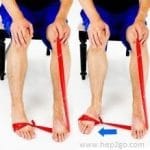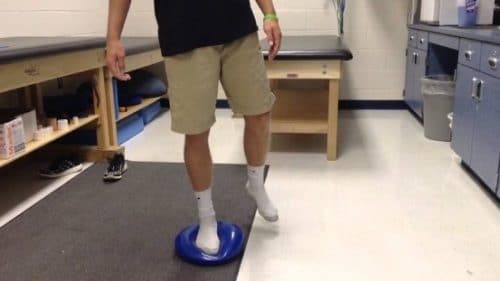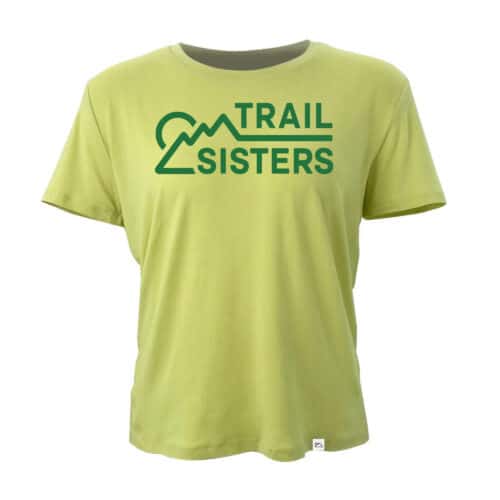Attention: Prance in the snow without injury with these tips!
It’s that time of the year again. The snow has already hit the mountains, and will soon be landing in your local towns. For some that means it’s time to pull out all that winter sports gear, and for others a sense of uncertainty is setting in around the difficulty associated with snowy running. Whatever direction your heart is pulled during the winter months, utilization of a balance and strength training program to compliment your activities will help keep your body happy and healthy in the upcoming months.
Snow inherently provides an unstable base that the athlete has to adapt to by increasing intrinsic control of the body as it responds to variable perturbations. Any change in surface texture that decreases friction (aka ice) or increases compliancy (soft snow) will demand increased balance response and increased firing speed of muscles to prevent a slip and associated injury. So, how can you stay ahead of this and make sure that you do not slide face first down the mountain or even on that sidewalk outside your house? The answer is based on what controls balance in the body.

Balance is controlled by vision, the vestibular system (inner ear), and by sensors in the feet as they make contact with the ground. Therefore, the first step is to make sure that your vision is not occluded. If it is snowing, making sure that you wear sunglasses and bring a dry bandana to wipe them down intermittently to maintain a clear visual field. Also, with the surface being more challenging, do not be afraid to be hyperaware of the ground and root your focus towards ~10 feet ahead of you to strategize your next steps. In terms of the inner ear, this is one that you cannot control as much as this is not purely volitional. Nonetheless, we can optimize the auditory system by not wearing ear buds and making sure that your head is staying level while running (i.e: no head banging allowed on slick surfaces!).
The biggest piece that you can intervene on via an exercise program is your ankle and foot strength that will help detect and correct body position if you hit an unsteady spot. Often, people will develop medial ankle pain with the initiation of snow running due to increased rolling in and out of the ankles to try to keep you vertical while moving at high speeds. This asks your posterior tibialis (the muscle that controls your foot from going out to the side or pronating), peroneals (on the outside of the ankle), calf complex, and tiny foot muscles to do a lot of work. Injury often results with a mismatch of the muscle’s capacity to work and what the activity you are doing is requiring it to do. So at baseline, most of us are just not strong enough to make the transition from stable to unstable without a little cross training to set you up for success.
In fact, society fosters incredibly weakened feet due to the heavily cushioned shoes that most people have been in since infancy. Most individuals function very well and gain a sense of stability with supportive shoes versus in a barefoot condition. This is not to say that you should dive head first and change to Vibram Five Fingers as again that would be a mismatch between your muscles baseline strength and the demands of the activity, but it does suggest that there may be a place for this in your day to day life. I am a big believer that everyone should have a biomechanical assessment performed by a trained physical therapist to provide body awareness education on where your legs and feet should be positioned to optimize function and mitigate injury risk. With an understanding of what your foot should look like when it is active and engaged in a barefoot condition, wearing a minimal shoe for short distances including walking in the office or around the neighborhood can actually be very beneficial for foot strengthening. This could be an effective strategy for someone with a tight schedule looking to get some adaptation in the feet, but needs to be done safely and properly (see below for details). Also, since it does become such a mindful activity to engage your foot muscles it is safer to stay in your standard shoe for trail and road as most people are not able to think about the foot position on every stride over the course of a run.
Below are basic strategies for finding an active foot posture:
- Stand in front of a mirror and make sure that the bones on both sides of your ankles are both equally visible (most people are more prominent on the inner side of the ankle). Adjust the ankle to neutral.

Adjusting ankle to normal. - Extend all of your toes and keep the balls of your feet planted on the ground. Notice how high your arch is—this is the maximum height of your arch.
- Lower your toes down to the ground, but keep the arch lifted. Oh and do not curl your toes (don’t worry most people to do this initially!)
- Splay your toes and maintain equal pressure on your 1st and 5th toes.

A lot of work right? Hence why I recommend this as an exercise for short distance activity versus something to utilize on every stride for the average distance runner.
Okay, what about the rest of those muscles that I mentioned? There is a great variety of exercises that you can work on to optimize strength for improved stability while running. Below I have listed five simple exercises that address the stability muscles around the ankle:
- Towel scrunches with toes
- Seated pronation control (posterior tibialis)
- Seated peroneal strengthening
- Standing single leg calf raises (straight leg and flexed knee)





Another major theme of stability on unstable snow is performing exercises that focus on single leg balance. This translates to running as we spend time on one leg and require great control. By doing exercises on one leg, you demand your core and pelvic stabilizers to increase activation. Proximal stability in the trunk and gluteals is critical for balance correction. Here are a couple of my favorite home tools to challenge my balance that you can do while watching your favorite Netflix show or at the office at the desk.
- Balance Disc
- BOSU Ball


The biggest injury prevention strategy with any activity is to approach everything with a graded exposure mentality. This means if you have never participated in snow running before, it would be a bad idea to go out and do a 10 mile run full force. Your body needs time to adapt. Start with low mileage, allow rest for your bones and muscles to adapt, and do not push past pain. Always remember, that the cardiovascular system develops faster than the musculoskeletal system. You might feel like you are ready to push for that extra mile, but your body may be crying for a break. Error on the side of conservative with your first attempts and slowly increase to tolerance.
Good luck and happy winter running!
Anna Wetzel, PT, DPT, OCS
Feature Photo: Trail Sister @gretchen_walla
















One Response
Love it, Anna!!! Good reminder to kick off those shoes at home and keep working those little muscles.